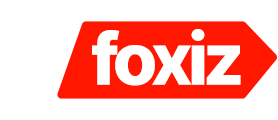Meta’s internal oversight board reveals gaps in the company’s handling of AI-generated content. The board warns of inconsistent labeling that could mislead users.
Meta owns Facebook, Instagram, and Threads. It uses labels to mark content generated or manipulated by AI. This helps users know what’s real and what’s AI-made. But the company’s system is far from perfect. The oversight board found serious inconsistencies in how Meta applies these labels. This raises questions about user trust and content authenticity.
TF unpacks Meta’s approach to AI content, the oversight board’s ruling, and why accurate labelling matters.
What’s Happening & Why This Matters
The oversight board acts like an internal referee for Meta’s content moderation policies. In a recent ruling published on June 25, 2025, the board called out Meta for uneven enforcement of its policy on manipulated media. Despite the rise of AI-generated audio, video, and images, Meta isn’t labelling all manipulated content uniformly.
Back in February 2024, Meta started watermarking AI content to help users identify it on Facebook, Instagram, and Threads. This step was meant to boost transparency. However, the oversight board highlighted a specific case where Meta failed to label a manipulated audio clip of Iraqi Kurdish politicians plotting election rigging. The clip was shared weeks before the parliamentary vote, yet Meta did not flag all instances of this media.
The board found this failure “incoherent and unjustifiable.” It argued that inconsistent labelling misleads users and weakens trust. The board also urged Meta to provide labels in local languages to ensure wider accessibility and understanding.
Additionally, the board expressed concern about Meta’s dependence on external experts for verifying manipulated content. It recommended Meta build internal expertise to handle these assessments directly, speeding up detection and reducing errors.
The ruling also connects to the European Union’s AI Act, which mandates companies mark AI-generated or manipulated content clearly. This legislation emphasizes transparency and aims to protect society from harmful or misleading AI content.
Meta has not yet responded publicly to the board’s ruling.
Impact
Clear and consistent labelling of AI content is vital for users to navigate the flood of digital information. Without reliable labels, manipulated content can spread unchecked, potentially causing harm, confusion, or misinformation.
Meta’s platforms reach billions worldwide, so their policies impact a huge audience. When AI content goes unmarked, it risks eroding trust in social media. The board’s call for local language labels also stresses the need for inclusivity across global markets.
The reliance on third parties for technical verification points to a larger challenge in AI governance. Companies like Meta must strengthen internal capabilities to manage complex AI detection tasks effectively.
TF Summary: What’s Next
Meta’s internal oversight board shines a light on inconsistent AI content labelling that risks misleading users. The company faces pressure to improve its detection technology and label AI media consistently across languages. This step is essential to rebuild user trust and comply with evolving regulations like the EU’s AI Act. How Meta responds will shape the future of AI transparency on social media platforms.


